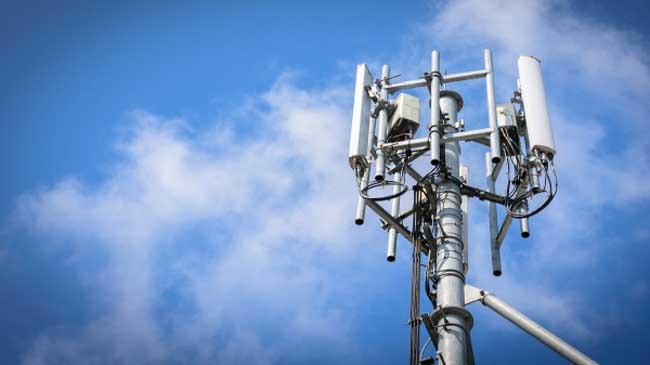As you are retrieving the kids from summer camp or rather heading out on a late summer vacation, you may notice a flurry of activity around the ubiquitous symbol of the Connected Age, your local cell tower. The next revolution in wireless communication—5G—is almost here, and this summer marks the beginning of the preparations.
As most blog readers know, mobile network technologies have become characterized by loosely defined “generations.” First-generation (1G) devices were introduced in the 1980s, and at that time, 1G devices used analog technology and could only transmit and receive voice calls. However, throughout the last thirty years, successive generations have boosted speed, added data capabilities and Internet connectivity, and expanded their utility. Today’s 4G systems even carry peak download speeds of 100Mbps and uploads of up to 50Mbps, enabling services such as on-demand high-definition (HD) streaming and multiuser videoconferencing. Some now forecast that high-resolution video will consume 75 percent of data usage by 2021. It may not seem like it to a parent trying to contact a teenager who broke curfew, but a 4G smartphone still allows you to make and receive phone calls!
While there is no guarantee that 5G will solve the teenager problem, it will offer turbocharge performance in a myriad of other ways. Early installations are expected to feature download speeds of around 5Gbps coupled with a latency of 1 to 2ms. The extra bandwidth will allow new applications such as 4K/8K video streaming, autonomous vehicles, virtual and augmented reality, plus a host of others.
What else is hot this summer? The Third Generation Partnership Project (3GPP), the organization that set standards for earlier wireless network technologies, finally approved Release 15 at the end of 2017: This standard defines waveforms, channel coding, and modulation schemes, plus advanced antenna techniques that open up new frequency bands that mobile networks were not previously able to use.
Release 15 constitutes the first global standard for 5G networks. It covers three frequency ranges: Low-band (below 1GHz); mid-band (1GHz to 6GHz); and high-band (above 24GHz), known as mmWave in 5G terminology.
At first, the new 5G antennas will be co-located with existing installations—which is the reason for this flurry of cell-tower activity. The initial rollout will concentrate on the 3GPP non-standalone (NSA) 5G specification that will support connections to the current 4G Long-Term Evolution (LTE) system. You’ll be able to access 5G and 4G connections simultaneously: In areas where the signal is weak, 5G devices will take advantage of existing 4G networks to guarantee service. Later installations will be standalone (SA) systems built solely with the 5G infrastructure.
Much of the visible effort will consist of installing new multiple-input multiple-output (MIMO) antennas, a key requirement for 5G success. A MIMO installation can handle multiple users simultaneously and can transmit more information over a given bandwidth than a signal-antenna system: This metric is quantified as spectral efficiency, measured in bits/sec/Hz.
MIMO antennas have been around for a while and are used in both LTE and Wi-Fi networks, which top out at eight antennas, used for both transmit and receive. This is known as an eight-branch transmit and eight-branch receive (8T8R) MIMO, but a “massive” MIMO array in 5G may contain up to 128 or 256 mini-antennas in a base station and between two and ten mini-antennas in a user device such as a tablet or smartphone.
A massive MIMO array sends a large number of transmissions, and various obstacles reflect these transmissions before they arrive at a receiver as a complex multipath signal. The characteristics of the received signal are constantly changing: While the base station is stationary, obstacles and the user device may all be moving. As there’s no way to know beforehand the spatial environment between the device and the base station, the smartphone or tablet periodically transmits a pilot signal with known characteristics. The base station compares the received signal to the known original to determine the distortion that the environment may have caused, then forms a channel state matrix (CSM) and applies the CSM correction factors to the transmitted signal so that a coherent signal arrives at the device. It performs the inverse operation when receiving transmissions from the device.
AT&T will initially launch 5G in Atlanta, Georgia; Waco, Texas; and Dallas, Texas late in the summer. Some of our readers witnessed a first-hand demonstration of the high data-transfer capacity and ultra-low latency of 5G in Toledo, Spain, this past April. During this preview event, Spanish telecommunications giant Telefónica, together with Mouser supplier Ericsson and other partners, used 5G in an autonomous electric minibus to send and receive real-time, high-speed telemetry data while simultaneously providing passengers with HD streaming content.
The 5G system in this autonomous vehicle used the 3.5GHz band and is part of Telefonica’s 5G Technological Cities project, which aims to transform two cities, Talavera de la Reina and Segovia, into 5G testbeds over the next three years. In addition to the 5G network itself, the project involves the development and evaluation of use cases for the new technology.
Here in the US, the major mobile network providers have announced that initial deployments will occur during the second half of 2018 or early next year, that 5G-capable chipsets are available, and that smartphones are on deck for 2019. Apple fans will have to wait, though!—as to date, the company has been silent on its 5G plans.
So keep your eyes open while you’re out and about this summer, because the future of mobile communications could be coming to your neighborhood soon.

As a freelance technical writer, Paul Pickering has written on a wide range of topics including: semiconductor components & technology, passives, packaging, power electronic systems, automotive electronics, IoT, embedded software, EMC, and alternative energy. Paul has over 35 years of engineering and marketing experience in the electronics industry, including time spent in automotive electronics, precision analog, power semiconductors, embedded systems, logic devices, flight simulation and robotics. He has hands-on experience in both digital and analog circuit design, embedded software, and Web technologies. Originally from the North-East of England, he has lived and worked in Europe, the US, and Japan. He has a B.Sc. (Hons) in Physics & Electronics from Royal Holloway College, University of London, and has done graduate work at Tulsa University.















